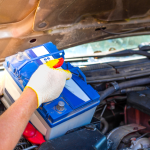Formula 1 (F1) is the ultimate dream for many aspiring race car drivers. Known as the pinnacle of motorsport, it’s a realm where only the most talented, determined, and resilient individuals compete. Becoming an F1 driver is no small feat, and while the rewards are enormous, the journey to get there is incredibly challenging. From the karting track to the Formula 1 podium, the path to becoming an F1 driver is long, filled with intense training, significant financial investment, and years of dedication.
In this article, we will explore the essential steps needed to turn the dream of becoming an F1 driver into reality.
Start Early: Karting as the Foundation

Almost all F1 drivers start their careers in karting, typically at a very young age. Karting provides a solid foundation in racing techniques, such as handling, braking, and cornering. Most F1 legends, including Lewis Hamilton and Sebastian Vettel, started karting before they were ten years old.
Karting is not only a proving ground for young talent, but it’s also the best way to develop fundamental racing skills. At this stage, it’s important to race competitively and consistently to stand out. Success in karting builds the skills and reputation needed to move up the motorsport ladder. This is where raw talent is identified, but it’s also where hard work, dedication, and discipline start to show.
Climbing the Racing Ladder
Once you’ve made your mark in karting, the next step in the journey to becoming an F1 driver is to progress through the racing ranks. This process involves moving through several lower formula series, each step offering a higher level of competition and more powerful cars. The goal is to consistently perform well and catch the attention of teams and sponsors who can propel you further in your career.
Formula 4 and Formula 3
Formula 4 (F4) is the typical starting point for young drivers transitioning from karting to single-seater racing cars. F4 is a crucial step because the cars are more powerful than karts, and the competition is much more intense. Here, young drivers learn to handle faster cars, deal with race strategies, and work closely with teams to improve performance.
After gaining experience in F4, the next level is Formula 3 (F3). F3 is more competitive and serves as a stepping stone to the higher levels of motorsport. Success in F3 often attracts attention from teams in the next category, Formula 2 (F2), which is just one step below F1. Many drivers who excel in F3 and F2 eventually find their way into an F1 seat.
Formula 2: The Final Step
Formula 2 (F2) is considered the final step before Formula 1. The cars used in F2 are powerful, and the level of competition is fierce. The skills learned in F2 closely mirror those required in F1, as the cars are similar in terms of handling and speed. Success in F2 is often the most direct path to becoming an F1 driver, as many current F1 drivers have graduated from this series.
In F2, performance is everything. Teams and sponsors are looking for drivers who consistently finish at the top and show the resilience needed to handle the pressures of professional racing. Winning or placing high in the F2 championship can often lead to an F1 team offering a seat or a testing opportunity.
The Importance of Physical and Mental Fitness
While driving talent is essential, becoming an F1 driver also requires extreme physical and mental fitness. F1 drivers experience intense G-forces during races, and handling an F1 car for an entire race demands incredible stamina and strength. Drivers train rigorously to ensure they can withstand the physical rigors of the sport.
Cardiovascular endurance is crucial, as drivers must maintain concentration and react quickly for the entire race, which can last over 90 minutes. Additionally, strength training, particularly for the neck, core, and upper body, is necessary to cope with the G-forces experienced when braking, accelerating, and cornering.
Mental resilience is equally important. Racing at the highest level comes with immense pressure, and drivers must stay focused and calm under stressful conditions. Whether it’s handling the pressure of competition or recovering from mistakes during a race, mental toughness can make the difference between winning and losing.
Securing Sponsorship and Support
Becoming an F1 driver is not just about talent—it also requires financial backing. Racing is an expensive sport, and progressing through the ranks of karting, F4, F3, and F2 can be financially demanding. Many drivers rely on sponsors to fund their racing careers. Securing sponsorships is critical for covering the costs of equipment, travel, and racing fees.
Early on, family support is often essential, but as drivers progress, finding corporate sponsorship becomes crucial. Companies are more likely to sponsor drivers who demonstrate professionalism, dedication, and potential. Building relationships with sponsors and performing well in races can attract the financial support necessary to keep moving forward in the sport.
Joining a Racing Academy
Many aspiring F1 drivers gain valuable experience and opportunities by joining racing academies. Several F1 teams, such as Ferrari, Red Bull, and Mercedes, operate driver development programs designed to nurture young talent. These academies provide top-tier coaching, access to advanced technology, and opportunities to race in competitive series like F4, F3, and F2.
Academies like the Ferrari Driver Academy and Red Bull Junior Team have produced numerous F1 drivers, including Charles Leclerc and Max Verstappen. Joining an academy not only offers excellent training but also provides a direct pathway to F1, as these teams often recruit their academy graduates into their F1 programs.
Developing Relationships with F1 Teams
As you progress through the racing ranks, building relationships with F1 teams becomes increasingly important. Many F1 drivers start as test drivers or reserve drivers for F1 teams before securing a full-time seat. Test drivers help teams by testing new car parts, providing feedback, and sometimes even filling in for injured drivers. This is an excellent way to get your foot in the door and prove your abilities to an F1 team.
Working closely with F1 teams allows aspiring drivers to gain invaluable experience and show their dedication to the sport. Being a part of a team, even in a test driver role, puts you on the radar for future opportunities. Many test drivers, such as George Russell and Esteban Ocon, have successfully transitioned to full-time F1 seats.
Breaking into F1
The final step to becoming an F1 driver is earning a seat with a Formula 1 team. This is the dream for every aspiring driver, but only a select few make it to the top. To break into F1, a driver needs to have shown consistent success in the lower formula categories, secured strong backing from sponsors, and developed relationships with key people in the sport.
Once in F1, the journey doesn’t stop. F1 is an incredibly competitive environment, and drivers must constantly perform at their best to secure their place. The margins between success and failure are slim, and drivers are always pushing themselves to improve.
The Challenges of Being an F1 Driver
While being an F1 driver is glamorous and rewarding, it’s also filled with challenges. The pressure to perform at the highest level, the physical toll of racing, and the constant media attention can be overwhelming. Additionally, F1 drivers are often away from home for extended periods, traveling the world for races, testing, and promotional events.
There is also the risk of injury, as F1 racing is inherently dangerous. While safety in the sport has improved dramatically, the risk remains, and drivers must always be prepared for the physical and mental demands of the job.
The Rewards of Becoming an F1 Driver
Despite the challenges, the rewards of becoming an F1 driver are immense. Competing at the highest level of motorsport, racing on the world’s most iconic tracks, and being part of a global phenomenon make all the hard work worthwhile. F1 drivers earn prestige, fame, and the opportunity to etch their names into motorsport history.
For those who have the talent, determination, and resilience to make it, the journey to becoming an F1 driver is a dream worth chasing.
Achieving F1 Glory
The road to becoming an F1 driver is long and demanding, but for those with a passion for motorsport, the dream is achievable. By starting early in karting, progressing through F4, F3, and F2, maintaining peak physical and mental fitness, and building relationships with F1 teams, aspiring drivers can put themselves on the path to success.
While the journey is filled with challenges, the ultimate reward—racing in the most prestigious motorsport in the world—makes every sacrifice worthwhile.










